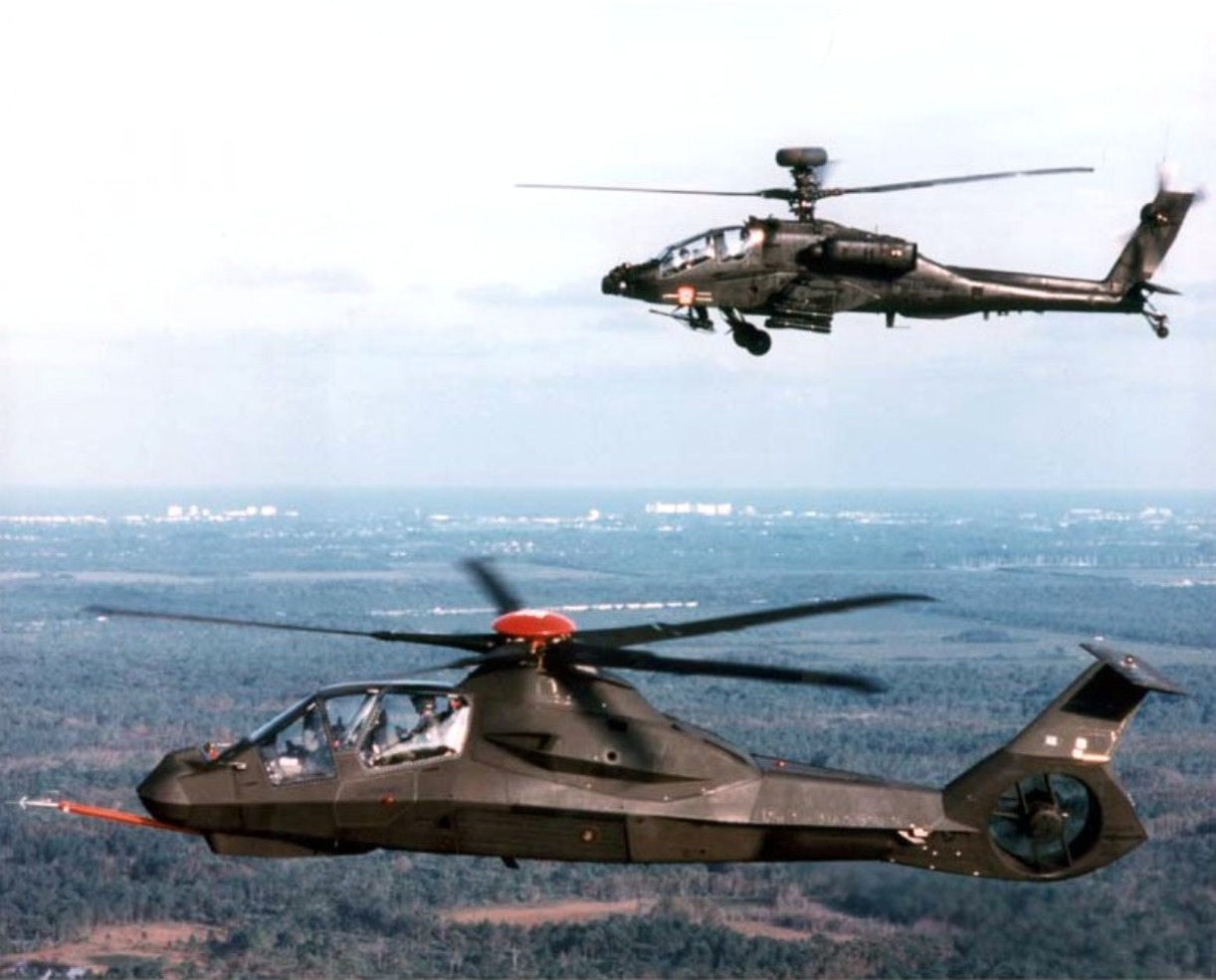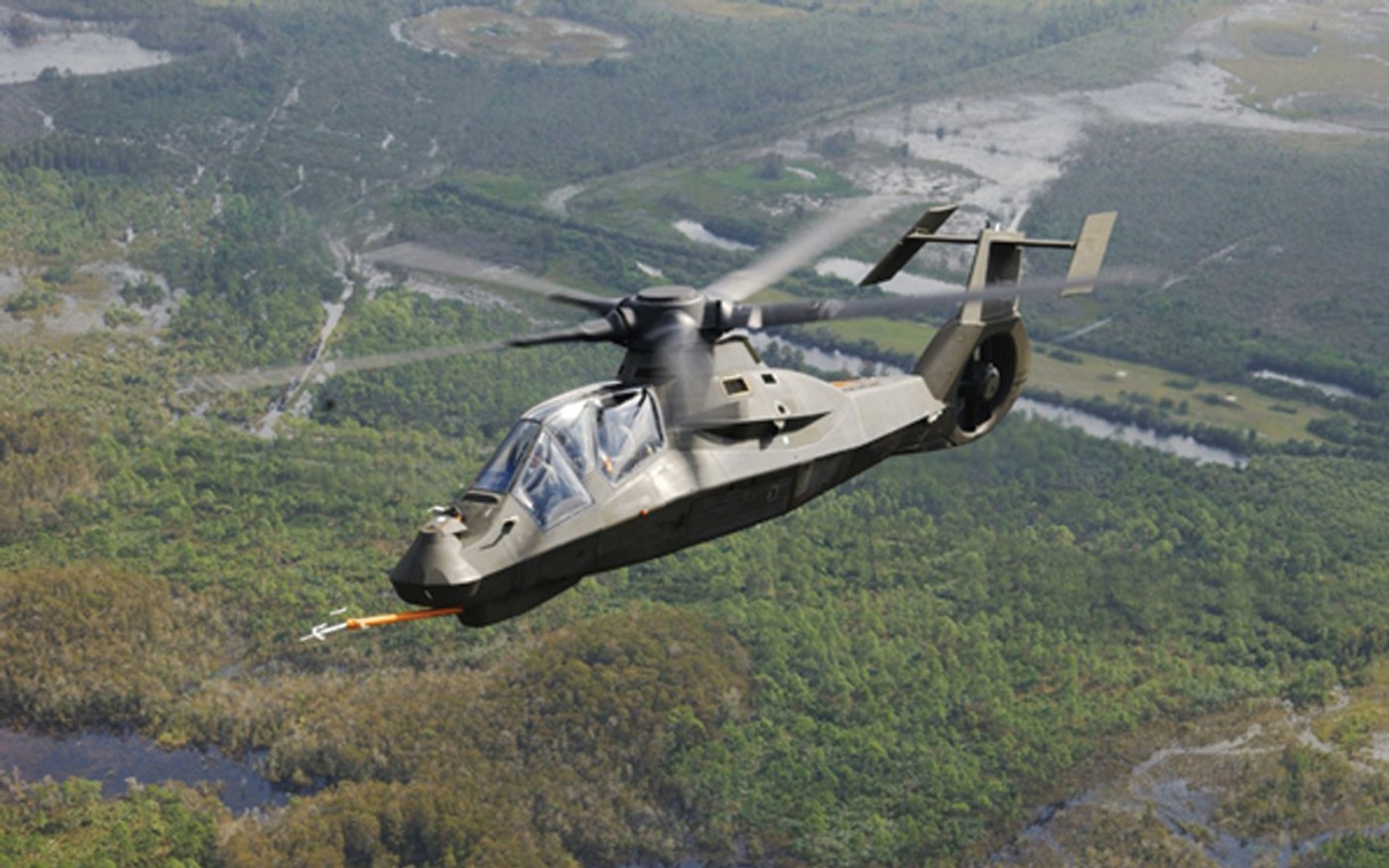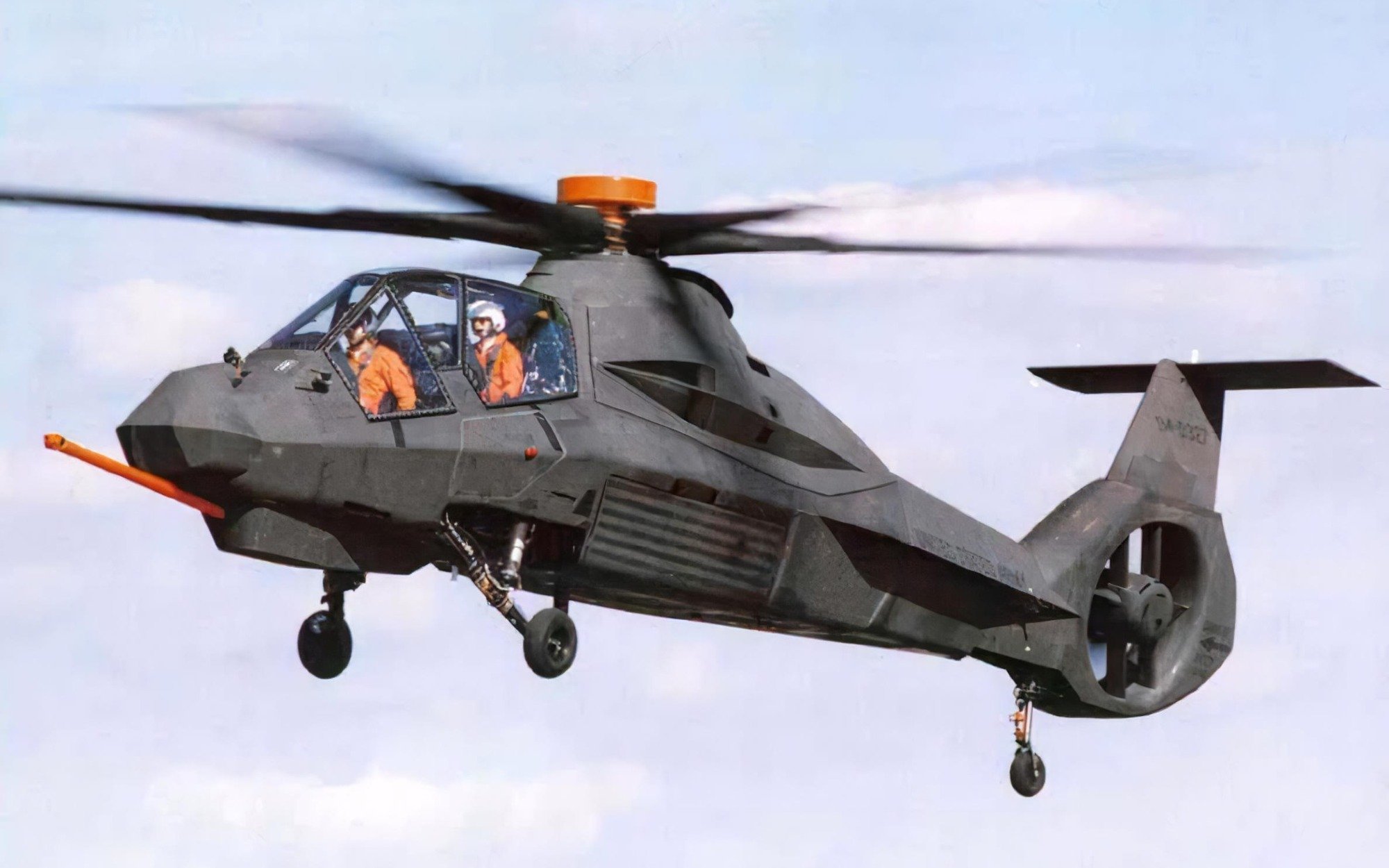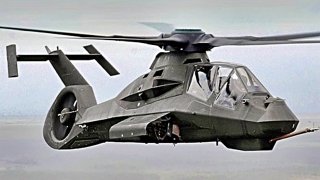F-22 or F-35 of Helicopters? Why the RAH-66 Comanche Failed
The two surviving RAH-66 Comanche prototypes are now in the collection of the U.S. Army Aviation Museum at Fort Rucker, Alabama. The Comanche also had a brief but distinguished fictitious service life in the late great Tom Clancy’s bestseller Debt of Honor, which leaves readers of the novel wondering what might have been.
RAH-66 Comanche: Why did it fail? Some military aviation journalists have dubbed the RAH-66 Comanche attack helicopter as “the F-35 of Helicopters,” owing to the whirlybird’s stealth capabilities.
But given the Comanche’s unfortunate fate, the RAH-66 might better be labeled “the F-22 of Helicopters.”
Even that might not be accurate enough, come to think of it, since the Raptor at least did go into production and enter frontline military service – just in far smaller numbers than originally intended.
By contrast, the Comanche was stillborn. The program was abruptly canceled after two prototypes were built.
“Comanche You Fought Hard, Comanche You Tried…”
So why was the Comanche program killed? After all, a rotary-wing combat aircraft that shares stealth capabilities with its fixed-wing supersonic brethren sounds like a fantastic concept. The U.S. Army certainly thought so. They began planning for the Comanche in 1982, back in the early days of Ronald Reagan’s presidency and amid the Reagan Doctrine’s drive to not merely contain but indeed to roll back the Soviet Union. In the highly technical terminology of then-USAF Lt. Col. Dan Ward in a 2012 issue of TIME Magazine, “The Army’s RAH-66 Comanche helicopter was going to be totally awesome, dude.”
The Army didn’t actually get around to submitting a Request For Proposal for this rotary-winged total awesomeness until 1988, Reagan’s last year in office. From there, it took three more years for the Army to award the contract to a combined Boeing-Sikorsky team, by which time President George H.W. Bush was in office. For the sake of historical perspective, the battle-hardened AH-64 Apache helicopter gunship was approved by the Army in 1982, underwent its first deliveries in 1984, and saw its first combat action during Operation Just Cause in Panama in December 1989.
The Army initially wanted to purchase 1,200 of these super-stealth helos. The intent was to replace the Army’s Vietnam War-vintage scout and light-attack helicopter fleet, including aircraft such as the AH-1 Cobra. (The Cobra, incidentally, still performed with distinction in U.S. Marine Corps hands during Operation Desert Storm in 1991.) The Comanche featured an all-composite fuselage, fully integrated digital flight controls, and advanced navigation and weapons systems. It was designed to provide U.S. forces with accurate, timely tactical intelligence.
Had this whirlybird warrior made the Army roster, its pilots would have wielded an aircraft that was 42 feet, 10 inches in length, with a weight of 10,597 pounds, a dash speed of 201 miles per hour, and a cruising speed of 190 mph. It boasted a maximum range of 1,449 miles and was powered by two T800-LHTEC-801 turboshaft engines and a rotor system consisting of a five-bladed bearingless main rotor and FANTAIL anti-torque system.
For the deadly duty of killing main battle tanks and armored personnel carriers, the Comanche packed a stowable three-barrel 20mm Gatling gun and had space inside the weapons bays for six Hellfire missiles. Additional external pylons could carry eight more Hellfires in case the need to establish air superiority overrode concerns about stealth.
The Comanche could also have been pressed into the duty of shooting down enemy helicopters, with a carrying capacity of 12 AIM-92 Stinger air-to-air missiles, plus room for an additional 16 Stinger missiles to be mounted on the aforementioned external pylons.
“…Comanche the Brave Horse, You Keep Your All”
The Comanche finally made her maiden flight on Jan. 4, 1996 — shortly before Bill Clinton’s second term in office. By this time, the Cold War was long over, and the Soviet Union, whose tank hordes the RAH-66 was meant to kill, had already collapsed. Not even the Global War on Terror could save the chopper, as Taliban and al Qaeda insurgents weren’t employing much in the way of armored vehicles.
A slew of technical maladies also afflicted the high-potential helicopter. One such problem was its weight.

As the ever-savvy Alex Hollings of Sandboxx News put it, the Comanche was “so heavy, in fact, that some wondered if the stealth helicopter would even get off the ground with its intended weapons payload.”
In addition, there were bugs in the software; the 20mm cannon was less accurate than originally advertised; the target detection system failed to live up to expectations; and efforts to both reduce weight and pull more power out of the Comanche's intended T800 turboshaft engines were going nowhere.

In 2004, after nearly $7 billion was spent on the Comanche program, it was unceremoniously canceled.
The Comanche-Clancy Connection
The two surviving RAH-66 Comanche prototypes are now in the collection of the U.S. Army Aviation Museum at Fort Rucker, Alabama. The Comanche also had a brief but distinguished fictitious service life in the late great Tom Clancy’s bestseller Debt of Honor, which leaves readers of the novel wondering what might have been.

About the Author
Christian D. Orr is a former Air Force officer, Federal law enforcement officer, and private military contractor (with assignments worked in Iraq, the United Arab Emirates, Kosovo, Japan, Germany, and the Pentagon). Chris holds a B.A. in International Relations from the University of Southern California (USC) and an M.A. in Intelligence Studies (concentration in Terrorism Studies) from American Military University (AMU). He has also been published in The Daily Torch and The Journal of Intelligence and Cyber Security.
All images are Creative Commons.


